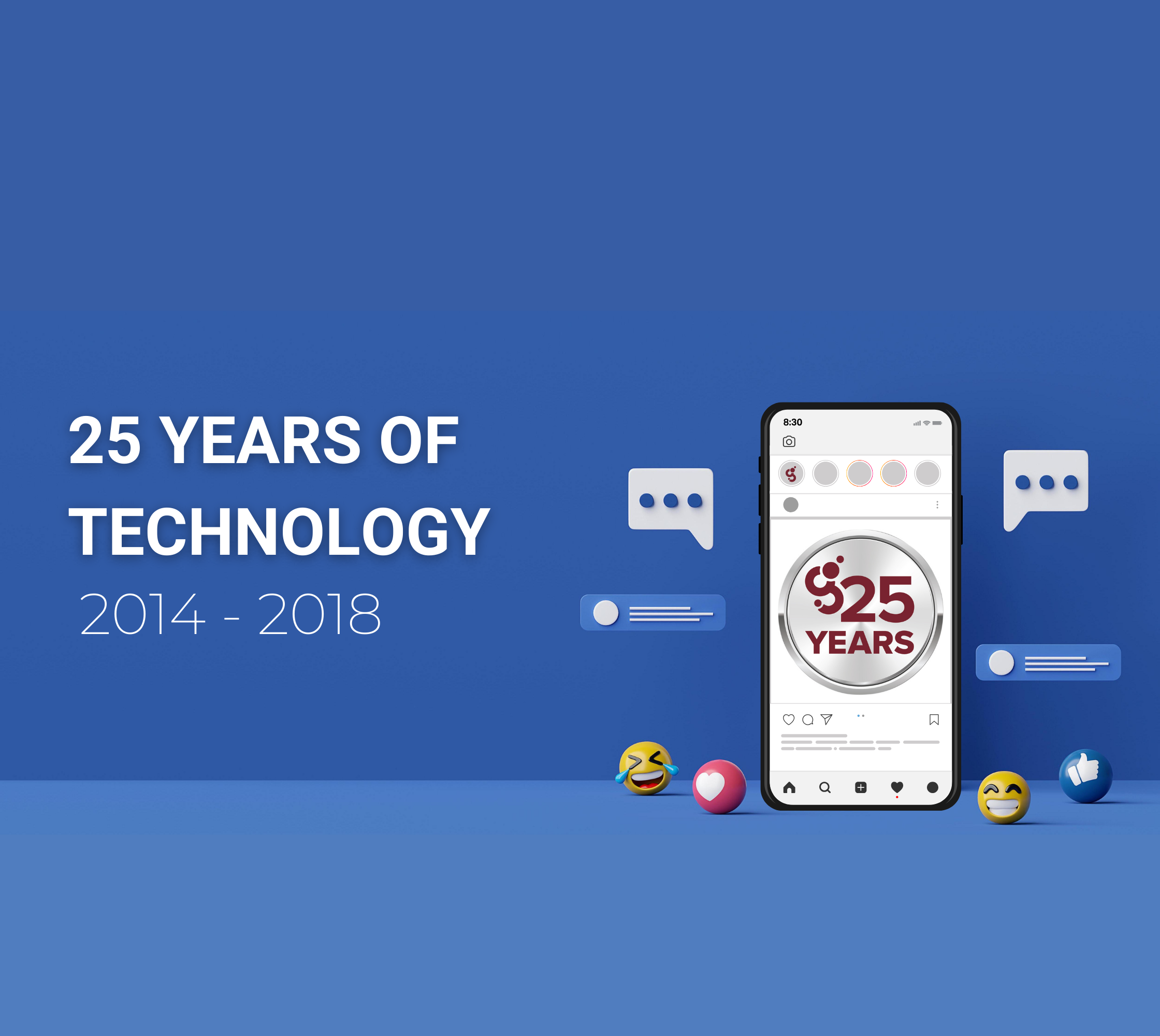This is the fourth article in our series highlighting the technological breakthroughs that shaped healthcare, marketing, and our work at Geonetric over our first 25 years in business. Read the first articles, which cover 1999 – 2003, 2004 – 2008, and 2009 – 2013.
Geonetric’s 15th year in business saw the rapid rise of internet-connected mobile devices and their use by consumers to look up healthcare-related information.
This was a crucial time for healthcare organizations and our agency to take a closer look at how websites appeared and functioned on mobile devices. They didn’t just have to look good on a smaller, narrower screen — they had to be easily navigable, and offer quick solutions for patients and visitors on the go.
Longstanding technology like Adobe’s Flash software platform, which was used to create animations and dynamic experiences in desktop and mobile applications, became casualties in the move from desktop browsing to mobile, especially as Apple’s iPhone gained in popularity.
“There was some shedding of technology that was really common on the desktop because more and more people were coming with mobile devices,” explained Geonetric CEO Ben Dillon. “These were all steps along the road to say, ‘Ok, the phone can actually be a fully functional front end for this internet thing.'”
2014
Mobile usage surpassed desktop browser traffic for the first time in 2014. As the amount of time people spent on their desktop and laptop computers drops in comparison to time spent browsing via smartphone, the need for organizations to take a mobile-first approach to marketing and website design became more apparent.
“We were very early in the movement of rethinking how to build these sites so that they work not just on a desktop but on mobile devices as well,” said Dillon. “Later, we started talking about mobile-first design and design everywhere.”
(Scroll down to the bottom of this post to see an infographic we created in 2012 — well before smartphone usage overtook browser traffic — forecasting the future of mobile browsing, social media, and how healthcare consumers engage online.)
2015
In line with the growing trend of mobile internet usage, Google began ranking pages with poor mobile experiences lower on its search results page.
The reasoning, according to Google, was so “users will find it easier to get relevant, high quality search results that are optimized for their devices.”
This move was a further push for organizations to ensure their websites were responsive for visitors regardless of the device they were using to look for information.
“It certainly had a huge impact. We’re in a place today where mobile web is a dominant piece of the digital experience,” said Dillon.
2016
Google took its “mobile-first” mindset a step further in 2016 by removing ads from the sidebar. Ads appeared above and below natural search results, allowing search results pages to look similar across mobile phones, desktop and laptop computers, and tablets.
This year also marked the launch of Facebook’s live video platform, which allowed individual users and organizational accounts alike the opportunity to connect and engage directly with consumers through streaming video. From a healthcare perspective, provider organizations could utilize live video to stream online classes, host virtual hiring events, provide patients and visitors with news updates about the organization, and even stream live surgeries!
2017
The number of internet-connected devices exceeded the global population for the first time in 2017 — an estimated 8.4 billion connected devices were used that year, compared to 7.5 billion people.
While the one billion difference between internet devices and people seemed staggering at the time, by 2024, more than 18 billion internet-connected devices were in use.
2018
The year 2018 ushered in discussions around personal data use and social media following the Cambridge Analytica scandal, in which a British consulting firm revealed that it had harvested the personal data of as many as 87 million Facebook users through a third-party app and used it for political advertising purposes without users’ consent.
Facebook was fined $5 billion by the Federal Trade Commission as a result of the scandal, and reminded marketers of the importance of privacy in the data collected and used in advertising — something that, more recently, Geonetric Privacy Filter was designed to safeguard.
What’s next?
Our final installment of this 25th anniversary technology blog series will be published in two weeks, covering 2019 through 2024.
No matter what the future holds for mobile devices, social media, and healthcare marketing, Geonetric is ready with a host of website design, software, and marketing solutions to help your organization stay on top of the latest trends.
Contact us today to learn how we can help your organization navigate the future of healthcare marketing!


